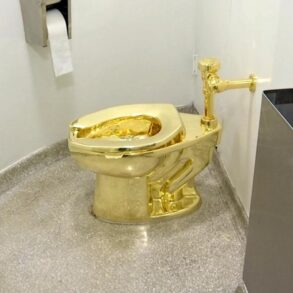As a heat wave gripped much of Texas, Jon Anthony Southards was dying inside a state prison in Huntsville.
The heat index outdoors topped 100 degrees each day starting June 19, state prison logs showed. In the 10 days that followed, more than half had a heat index of 110 degrees or higher — considered dangerous by the National Weather Service.
On the 10th straight day, June 28, the heat index peaked at 116. Stuck in solitary confinement with no air conditioning, he called his mother, Tona Southards, on his prison-issued tablet and told her it’s so hot he could hardly breathe. She spoke with him three times, she said, pleading with him to search for ways to keep cool. Ask the guards for a glass of water and turn on the fan, she said.
Hours later on that day, the 36-year-old man fell unconscious in the Estelle Unit. He was pronounced dead just before midnight. The Texas Department of Criminal Justice, which runs the state’s prisons, said his initial cause of death is cardiac arrest.
Southards, born in Fort Worth, was just a few years into a two-decade sentence on burglary charges when he died. His mother believes the heat was a main factor.
“The judge sentenced my son for 20 years justifiably, but TDCJ sentenced him to death I believe,” Tona Southards said. His mom was planning for his parole hearing in April and said she had a job lined up for him if he was released.
Southards’ death is one of more than a dozen the past two months inside dangerously hot state-run prison and jails — even after the state Senate spurned pleas to regulate temperatures in prison facilities and commit funds to air conditioning. More than two-thirds of TDCJ’s prisons and jails, which house tens of thousands of inmates, lack air conditioning in most living quarters.
A Dallas Morning News analysis found at least 15 inmates died in June and July of unknown causes, of a reported heart attack or of cardiac arrest in facilities with little or no air conditioning on days temperatures reached at least 95 degrees. Extreme heat is associated with an increase in cardiac arrest events, said Julie Skarha, an environmental epidemiologist — but TDCJ says it has no reason to believe heat played a role in any death this summer.
Conditions in some TDCJ facilities have prompted repeated litigation, with the state fighting at least 20 lawsuits related to extreme heat in prisons.
TDCJ is investigating Southards’ death and awaiting a final autopsy, spokeswoman Amanda Hernandez said, but agency officials have not counted a heat-related death since 2012. Twice since then, in-custody reports have mentioned two inmates dying of heat stroke or hyperthermia (TDCJ has countered those findings.)
Heat’s role in death hard to capture
State facilities house about 128,000 inmates and has about 17,000 correctional officers, per TDCJ. Eight inmates and 15 staff members have been treated for heat-related illnesses as of July 14 this year, and seven inmates and 11 staff members were treated last year.
The role that heat plays in a person’s death is hard to capture on a death certificate, Skarha said. Heat-related illnesses include heat exhaustion and heat stroke, the latter of which is rare and can lead to death.
“There’s all these other health outcomes [including organ failure] that can happen before your body gets heat stroke,” said Skarha, who is affiliated with the Brown University School of Public Health.
According to findings from a team of researchers, including Skarha, as many as 13% of deaths in Texas prisons without air conditioning may be attributed to extreme heat. The research looked at a little over 3,000 deaths between 2001 and 2019 in the summer months.
TDCJ said it has taken steps to mitigate the effects of possibly deadly temperatures.
In the last five years, the agency has added air conditioning to 3,598 beds, Hernandez said. She said there’s an active project this year that will add air conditioning to 5,861 beds, making a total of 9,459 beds with cooling.
Cooling fans are also strategically placed in facilities, and inmates have access to a fan, Hernandez said. She added that they can request cups, water and ice, and use air-conditioned areas when needed.
Prisoner advocates and family members of those incarcerated say these practices aren’t being followed. Tona Southards said it took nearly an hour for her son to get a glass of water on the day he died and that it was too hot to drink.
And those in solitary, which TDCJ refers to as security detention, are unable to leave of their own accord and access air-conditioned areas when they needed, advocates say.
According to Hernandez, those inmates are in a cell by themselves for most of the day. They are allowed out for one to two hours and must be accompanied by correctional officers, she added.
In order to stay cool, solitary inmates will wet their clothing and wet the floor then lay on that, said Brittany Robertson, a prisoner advocate and the founder of Texas Prison Reform.
TDCJ also identifies inmates at a heightened risk of heat-related illnesses through a sensitivity score, according to Hernandez. A heat-sensitivity score considers a variety of factors ranging from heart and medical diseases to mental health disorders or a person’s medication, Hernandez said.
Southards did not have a heat-sensitivity score that would have given him priority placement for an air-conditioned bed, Hernandez said. His mother disputes this. His doctor said Southards had to be in an air-conditioned unit, his mother said, because he was taking depression medication — some of which can change the body’s response to heat — and had severe asthma.
“Our son did not even have an inhaler,” she said.
Southards was one of thousands of inmates without access to air conditioning in their living quarters. The Estelle Unit, which houses about 3,000 inmates currently, has 980 beds with air conditioning, Hernandez said.
The blistering heat also contributes to turnover amongst correctional officers and puts greater stress on both inmates and staff, said Clifton Buchanan, the deputy director of the AFSCME Texas Correctional Employees Council 907, the union that represents TDCJ employees. According to Hernandez, the agency has 73% of its correctional officer positions filled.
“We have taxpayers, we have U.S. citizens, we have immigrants that are working for TDCJ who are subjected to these unworkable conditions for 16 to 20 hours a day,” Buchanan said.
Seeking answers
A prison staffer called Tona Southards shortly after Jon’s death, she said. When she asked if heat played a role in her 6-foot-5 son’s death, she said officials checked the temperature in his cell but declined to release it, citing the ongoing investigation into his death.
“My son lost his life to the deplorable conditions,” she said. “We, his family, demand answers.”
According to his mother, Southards was passionate about music and art, and playing the keyboard, trumpet and saxophone.
He was raised in Fort Worth and spent time with his family in Forney when he could. Southards was incarcerated on and off during his adult life, but had rekindled his Christian faith recently, his mother said.
TDCJ is adding more air conditioning in its facilities each year, but the process could be sped up with better funding from the state legislature.
Before Southards’ death, lawmakers failed to enact regulations to further mitigate the extreme heat behind bars. During the 2023 legislative session, the House passed a bipartisan bill that would have required all TDCJ-run facilities to be kept between 65 and 85 degrees, the standard for county-run jails. The legislation ultimately stalled in the Senate.
Amite Dominick, a prisoner advocate and supporter of House Bill 1708, laid blame for its downfall on the Senate and Gov. Greg Abbott. Lt. Gov. Dan Patrick’s office did not respond to a request for comment.
“There is nothing more that can be said except sadistic cruelty,” said Dominick, the president of Texas Prisons Community Advocates.
According to a $321.3 billion budget approved June 18, TDCJ is set to receive additional funding of $85.7 million to complete additional “deferred maintenance projects.” Hernandez said a substantial amount of those funds will go toward air conditioning for beds.
TDCJ is projected to have 47,000 beds with air conditioning by the end of 2023, Hernandez said. That would cover about 37% of the total inmate population.
Lawmakers, advocates, Tona Southards and other relatives of incarcerated people were in Austin on July 18, demanding the governor call a special legislative session to address air conditioning in prisons.
Those demands appear unlikely to be met; Abbott’s office did not respond to a request for comment.
Regardless, Tona Southards is still reeling from her only son’s death. She has spent the last few weeks advocating on his behalf about prison conditions.
But as she has done so, she has had to re-live the tragedy over and over, she said. Her family held a service for him earlier this month in Terrell, but her son has not been laid to rest.
“It’s just not even real to us yet,” she said.
Tona Southards said her family is investigating the death themselves and are seeking legal counsel. In the Austin news conference, she donned white prison garb with her son’s name etched in black.
“He was my son,” she said in Austin. “He was my best friend. He was the very wind beneath my wings and the reason that I stand here today.”
Staff photographer Shafkat Anowar contributed to this report.

This post was originally published on this site be sure to check out more of their content.







